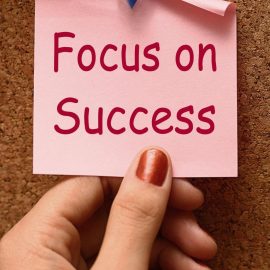

This article is an excerpt from the Shortform book guide to "The Extended Mind" by Annie Murphy Paul. Shortform has the world's best summaries and analyses of books you should be reading.
Like this article? Sign up for a free trial here.
Looking for some ways to improve cognitive function? How can you use your body to improve your cognition?
According to Annie Murphy Paul, modern society is at odds with our neurobiology. In her book The Extended Mind, she explains how to improve cognitive function based on the evolutionary methods our brains thrive on—actively engaging with our bodies.
Keep reading to learn three ways to improve cognitive function, according to Paul’s methods.
Improving Cognitive Function: Paul’s 3 Ways
According to science writer Annie Murphy Paul, people who know how to make use of external aids have a cognitive advantage because modern society is at odds with our neurobiology. Our brains evolved to suit a hunter-gatherer lifestyle in which we were actively engaged with our bodies, the world around us, and our relationships with each other. However, the world has quickly changed, and our society, full of abstract ideas, artificial environments, and social isolation, no longer stimulates our brains in a way that unlocks their full potential. Paul claims that some of the best ways to improve cognitive function involve using your body.
In this article, we’ll describe the three ways Paul recommends you can involve your body in improving your cognitive function.
1. Exercise Strategically
The first way you can use your body to improve your cognitive function is by exercising in a way that matches the kind of thinking you want to do. Paul distinguishes among mild exercise, moderate exercise, and heavy, sustained exercise, and she asserts that each level of physical exertion has a different effect on your brain.
First, Paul states that mild exercise (which includes standing and fidgeting, which is any small repetitive movement) boosts your ability to focus and your overall quality of thought when compared to simply sitting still. It costs energy to restrain your natural impulse to move, and this mental drain weakens your cognition. Consequently, Paul recommends using a standing desk rather than a sitting desk, if possible, and allowing yourself to freely fidget and switch positions while working.
(Shortform note: Arguably, this tip is less about engaging in exercise and more about avoiding an excessive amount of sitting still. You may have heard the phrase “sitting is the new smoking” due to its negative health effects—although this isn’t literally true, sitting for too long does stall digestion and metabolism and may interfere with sleep quality. Both of these effects can cause a range of health concerns. While fidgeting in a seated position may help you think, it’s not enough to ward off the risks of a sedentary routine. If you don’t have access to a standing desk for work, make sure to take breaks from sitting at least once an hour.)
Second, Paul explains that moderate exercise, which includes brisk walking and any other brief or light physical activity, boosts your thinking in the same way as mild exercise but with an even stronger effect. Unlike mild exercise’s impact, this cognitive enhancement lasts for up to two hours after you stop exercising. Thus, Paul recommends that you exercise before work whenever possible and work out the body while taking breaks from cognitively demanding tasks.
(Shortform note: While Paul emphasizes the short-term cognitive benefits in the hours after exercising, evidence shows that regular exercise significantly improves your cognition in the long run, too. In Spark, John Ratey asserts that exercise produces a specific protein in the brain that creates more connections between neurons and strengthens the signals between neurons, resulting in improved cognition on a long-lasting, biological level.)
Last, Paul asserts that heavy, sustained exercise that significantly raises your heart rate for 40 minutes or more has a very different effect on the brain. This kind of exercise impairs your thinking: As your brain devotes more mental resources to managing your body, it reduces activity in the prefrontal cortex. As a result, you fall into a mild trance state in which it’s harder to think logically, but it’s easier to come up with new ideas and creative connections. Therefore, if you need a boost of creativity, try heavy exercise.
(Shortform note: This state of “transient hypofrontality” caused by heavy, sustained exercise is likely at least partly responsible for the “runner’s high” described by distance runners. In addition to triggering looser, more creative thinking, the runner’s high involves losing a sense of time, increasing your mindfulness of the present moment, and experiencing peaceful euphoria. Your creative thoughts during this period of transient hypofrontality will be harder to remember after you return to a normal cognitive state, so make sure to write them down.)
2. Use Your Body to Think Through Ideas
Paul explains that performing specific motions is a good way to improve your cognitive function, ability to learn, understand complex ideas, and think through problems. The brain is exceptionally good at learning physical skills through practice, a holdover from our evolutionary past. We can remember things we’ve physically done much more easily than words or images. Consequently, you can process and synthesize abstract concepts more effectively if you express them in your body.
First, Paul asserts that by engaging in bodily motions while learning abstract concepts, you can recall those concepts more easily later, especially if you’re able to repeat the same learned movements. Ideally, these movements will be conceptually related to the ideas themselves—for instance, you may move your hands to act out the different stages of a butterfly’s life cycle—but physical movement makes ideas easier to remember even if the motions have nothing to do with them. For example, raising your arms every time you study the capital of Iran will help you remember what it is in the future.
(Shortform note: In the early 1990s, the idea that each student has a unique “learning style” became popular, as did the theory that teachers could achieve the best results by presenting information in different ways to different students. In this framework, the kind of movement-assisted learning Paul describes here is known as “kinesthetic learning.” However, in recent years, research has shown learning styles to be, for the most part, a myth—several studies have demonstrated that students who study according to their preferred learning style learn no better than students who don’t. In reality, learning through movement has been shown to improve comprehension and memory for all students—we’re all kinesthetic learners.)
Similarly, Paul explains that you can more quickly understand abstract concepts on a deeper level by imagining yourself as part of the material you’re learning and acting the concept out. For example, if you want to learn the anatomy of an eagle, moving your body as if you’re a bird and pointing to the spots on your body where its bones and organs would be will help you more deeply comprehend how its body functions.
| Learning Through Movement in Virtual Reality Paul explains that due to our biology, we learn best through physical practice—and many people predict that virtual reality (VR) will soon make this kind of education extremely common. For example, for years, medical students have been learning treatment procedures by running expensive, hands-on simulations with high-tech dummies or human cadavers. VR has already begun to make this kind of hands-on experience more easily accessible to students and infinitely repeatable in a digital environment. Additionally, VR allows students to gain experience with a wider variety of rare medical cases. Other institutions, too, have begun experimenting with VR: The New York Times has created a curriculum of VR experiences for classrooms. Many of these experiences enhance learning by placing the student at the center of a setting that’s normally merely conceptual—a high-tech version of the imagination exercise Paul recommends. In this curriculum, students fly through the solar system past Pluto, go back in time to historic moments in the history of the Olympic Games, and look around inside the Large Hadron Collider. |
3. Gesture With Your Hands to Think and Communicate Better
Paul asserts that another way we can use the body to improve our cognitive function is by gesturing more with our hands. This is because our gestures are more in touch with our subconscious minds than the words we say.
When we’re learning something new, or when we’re struggling to understand a particularly challenging idea, we instinctively gesture to represent ideas that we don’t consciously understand clearly enough yet to put into words. This kind of gesturing helps us clarify ideas and come to a better understanding of what we already know, both in our conversations with others and when thinking things through on our own. You can use this to your advantage: The next time you find yourself deep in thought, gesturing more expressively may help you discover valuable insights.
(Shortform note: The fact that hand gestures are so connected to the subconscious mind means that when someone is lying, their hands frequently give away that they’re not being truthful. Research has found that when a person lies, they instinctively gesture with their hands more than normal. This is perhaps because lying requires more quick, rigorous cognition than telling the truth—liars may gesture as a subconscious attempt to help themselves invent details on the fly and monitor whether others are believing their lies.)
Additionally, Paul argues that, aside from improving our cognitive function, gesturing is one of the most effective ways we can improve our communication with others. Linguists believe that communication through physical gestures developed before verbal language—consequently, the gestures we make are often just as information-rich as the words we say. By gesturing more in our conversations with others, we vastly increase the chance that they’ll understand what we’re saying.
(Shortform note: According to Vanessa Van Edwards, author of Captivate, while gesturing with your hands can improve the clarity of your communication, too much gesturing can distract your listeners or make you look untactful. To appear expressive yet in control, imagine a box extending from your shoulders down to your waist to contain your gestures. If you really want to optimize your gesturing, try filming yourself in conversation with a friend to see how you appear to others.)

———End of Preview———
Like what you just read? Read the rest of the world's best book summary and analysis of Annie Murphy Paul's "The Extended Mind" at Shortform.
Here's what you'll find in our full The Extended Mind summary:
- Why you don't need to withdraw into your mind to achieve optimal cognition
- Cognitive strategies and habits that will help you better understand complex ideas
- How gesturing with your hands helps you think better






